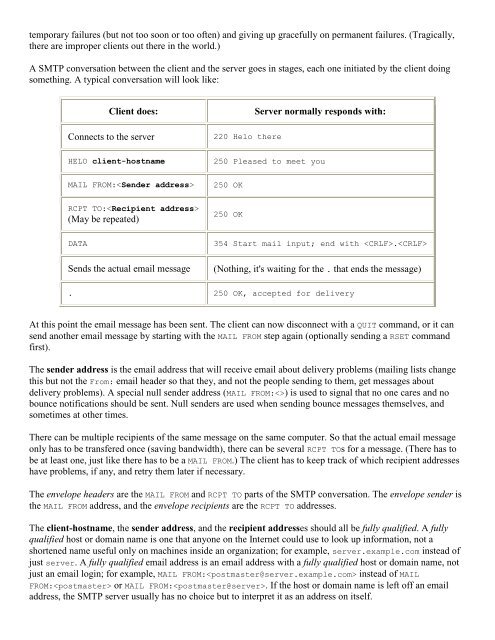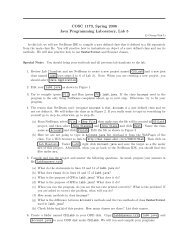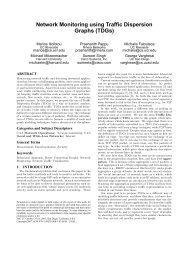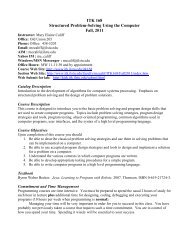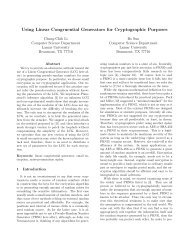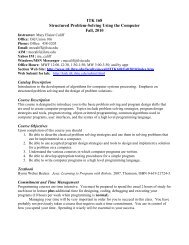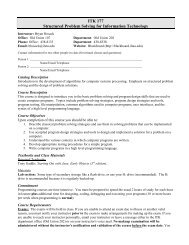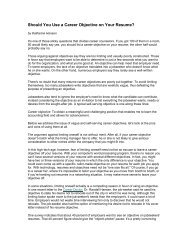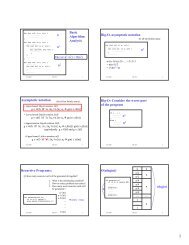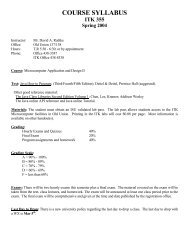Create successful ePaper yourself
Turn your PDF publications into a flip-book with our unique Google optimized e-Paper software.
temporary failures (but not too soon or too often) and giving up gracefully on permanent failures. (Tragically,<br />
there are improper clients out there in the world.)<br />
A <strong>SMTP</strong> conversation between the client and the server goes in stages, each one initiated by the client doing<br />
something. A typical conversation will look like:<br />
Client does:<br />
Connects to the server<br />
220 Helo there<br />
Server normally responds with:<br />
HELO client-hostname<br />
250 Pleased to meet you<br />
MAIL FROM:<br />
250 OK<br />
RCPT TO:<br />
(May be repeated)<br />
250 OK<br />
DATA<br />
354 Start mail input; end with .<br />
Sends the actual email message<br />
(Nothing, it's waiting for the . that ends the message)<br />
. 250 OK, accepted for delivery<br />
At this point the email message has been sent. The client can now disconnect with a QUIT command, or it can<br />
send another email message by starting with the MAIL FROM step again (optionally sending a RSET command<br />
first).<br />
The sender address is the email address that will receive email about delivery problems (mailing lists change<br />
this but not the From: email header so that they, and not the people sending to them, get messages about<br />
delivery problems). A special null sender address (MAIL FROM:) is used to signal that no one cares and no<br />
bounce notifications should be sent. Null senders are used when sending bounce messages themselves, and<br />
sometimes at other times.<br />
There can be multiple recipients of the same message on the same computer. So that the actual email message<br />
only has to be transfered once (saving bandwidth), there can be several RCPT TOs for a message. (There has to<br />
be at least one, just like there has to be a MAIL FROM.) The client has to keep track of which recipient addresses<br />
have problems, if any, and retry them later if necessary.<br />
The envelope headers are the MAIL FROM and RCPT TO parts of the <strong>SMTP</strong> conversation. The envelope sender is<br />
the MAIL FROM address, and the envelope recipients are the RCPT TO addresses.<br />
The client-hostname, the sender address, and the recipient addresses should all be fully qualified. A fully<br />
qualified host or domain name is one that anyone on the Internet could use to look up information, not a<br />
shortened name useful only on machines inside an organization; for example, server.example.com instead of<br />
just server. A fully qualified email address is an email address with a fully qualified host or domain name, not<br />
just an email login; for example, MAIL FROM: instead of MAIL<br />
FROM: or MAIL FROM:. If the host or domain name is left off an email<br />
address, the <strong>SMTP</strong> server usually has no choice but to interpret it as an address on itself.


